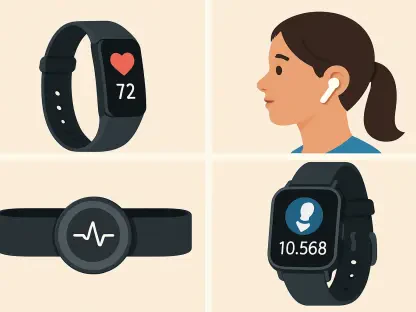Motorola’s track record with software updates has often left much to be desired, particularly when compared to competitors like Samsung. However, recent developments indicate a positive shift in the company’s approach. The research conducted by YTechB on Motorola’s US website uncovers that several Motorola Edge models, along with a series of Moto G and Razr devices, are slated to receive the Android 15 update. Despite these promising signs, notable omissions in Motorola’s update roadmap highlight ongoing challenges in providing consistent and timely updates across its entire device lineup.
Noteworthy Devices on Motorola’s Android 15 Roadmap
Edge Series Gets Priority
Motorola’s flagship Edge models are among the key beneficiaries of the Android 15 update. According to YTechB, the Edge Plus 2023, Edge 2024, and Edge 40 Pro are confirmed to receive the update. This marks a significant step forward for Motorola, especially considering the company’s history of lagging behind in software update policies. These high-end devices are not only getting the latest OS but also continued support that brings them more in line with industry standards.
Higher-end models like the Edge 50 Neo, which are set to receive five major OS updates and security patches, show Motorola’s commitment to its premium customers. However, while these improvements should be applauded, it’s important to note that they aren’t uniformly applied across all product lines. Offering extended support for flagship and mid-tier devices is becoming increasingly common among other smartphone manufacturers, and Motorola’s decision to follow suit signals a shift towards better market competitiveness.
Improvement Evident in Mid-Tier Models
In addition to the high-end models, the company has also made efforts to improve its update timeline for mid-tier devices. Several models from the Moto G series are also included in the Android 15 update list. This movement towards better software support is evident in models such as the Moto G Stylus and Moto G Power, providing these devices with an enhanced software experience and increased longevity.
Nevertheless, the inconsistency in update policies still stands out when considering Motorola’s entire product range. While many mid-tier devices are making the cut for Android 15, this isn’t the case for all. The selective approach raises questions about Motorola’s long-term strategy for supporting budget and older models. Customers purchasing mid-range devices often do so for their balance of affordability and features, expecting reasonable software support to maintain device usability over time. The mixed results in this segment highlight that although Motorola is making progress, there is ample room for improvement.
Notable Omissions and Comparisons to Competitors
Glaring Gaps in the Update Roadmap
Despite the positive strides, many Motorola devices are conspicuously missing from the Android 15 roadmap. Notably absent are several Moto G models from 2023, the Motorola Edge 2023, and the Moto G Play 2024. The latter, which was launched with Android 13 and only recently received Android 14, underscores Motorola’s continued challenge in providing timely updates, particularly for its budget models. The exclusion of these devices indicates that Motorola still struggles to match the consistency and speed of its competitors.
Such omissions are particularly glaring when compared to the commitment shown by other smartphone manufacturers like Samsung. For instance, Samsung’s Galaxy A16 offers six years of OS and security updates, a level of commitment that Motorola’s current policies fail to match for most of its devices, particularly those in the budget and mid-tier categories. The stark difference between Motorola’s limited update policy and Samsung’s extensive support highlights a critical area for improvement if Motorola aims to remain competitive.
Budget Segment Struggles Persist
Motorola has often struggled with timely software updates, especially when benchmarked against competitors like Samsung. Historically, their update schedule has left many users frustrated. However, there are signs of improvement. Recent findings by YTechB on Motorola’s U.S. website reveal that several models from the Motorola Edge series, together with various Moto G and Razr devices, are slated to receive the Android 15 update. This shift indicates that Motorola is making efforts to enhance its software update policy.
Nonetheless, while the inclusion of these models is a step in the right direction, there are still noticeable gaps in Motorola’s update strategy. Certain devices remain excluded from the Android 15 update list, indicating that the company continues to face challenges in offering uniform and timely updates across its entire product range. The inconsistencies highlight an area where Motorola still lags behind its competitors, even as it tries to improve. Overall, while the news is encouraging, Motorola still has a way to go to ensure all its users benefit from prompt software updates.









